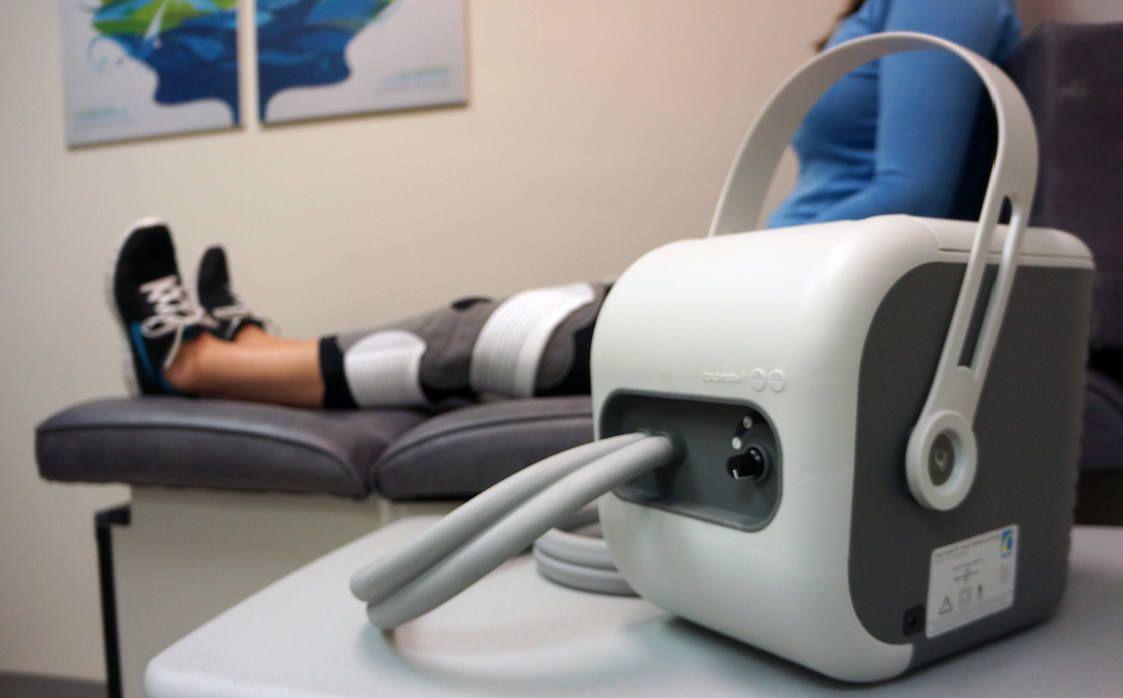When Cold Therapy Machines Are Most Effective During Rehab

Recovery after surgery or injury isn’t just about rest it’s about making smart choices that enhance the healing process. Cold therapy, also known as cryotherapy, is a trusted technique in the rehab toolbox. From elite athletes to everyday individuals recovering from orthopedic surgery, these machines offer a modern, targeted solution for pain and inflammation management. But timing matters. Understanding when these machines are most effective can make a significant difference in how smoothly and quickly one recovers.
What Are Cold Therapy Machines?
Cold compression machines are medical devices designed to deliver consistent, controlled cold to a specific part of the body. Unlike traditional ice packs, these machines maintain a steady temperature and often include compression features. This combination helps reduce inflammation, relieve pain, and promote healing more efficiently.
Used in hospitals, physical therapy centers, and increasingly at home, cold compression machines offer a practical solution for post-operative recovery, acute injuries, and chronic conditions. Their precision in targeting the affected area with therapeutic cold makes them an invaluable part of many rehabilitation protocols.
Why Cold Therapy Works So Well in Rehab
Cold therapy works by narrowing blood vessels (vasoconstriction), which limits fluid buildup and swelling. It also numbs nerve endings to reduce the sensation of pain. This is especially useful after procedures like ACL reconstruction, rotator cuff repair, or joint replacement surgeries, where inflammation and discomfort can slow down progress.
When used correctly, a cold therapy machine can minimize downtime and improve the comfort level during physical therapy. The goal is to reduce pain enough that patients can actively participate in movement and exercises crucial to regaining strength and mobility.
Ideal Times to Use Cold Therapy Machines
While cold therapy can be beneficial at multiple stages, it is most effective during the following rehab periods:
Immediately Post Surgery or Injury (First 72 Hours)
This is when inflammation peaks. Cold therapy units can significantly reduce swelling and bruising, helping the body manage the acute trauma. Most surgeons recommend starting cold therapy as soon as the patient is stable post-op.
Before and After Physical Therapy Sessions
Using cold therapy before a session may reduce stiffness and make joint movement easier, while post-session application helps minimize exercise-induced inflammation. This dual approach supports a smoother rehab progression with less discomfort.
During Flare Ups in Chronic Conditions
For patients with arthritis or repetitive strain injuries, Cold therapy units can be used during pain flare-ups to calm inflammation and allow continued function without relying solely on medication.
End of the Day Relief
Rehabilitation can be exhausting. Applying cold therapy at the end of a physically demanding day helps prevent residual swelling and discomfort from building up overnight.
How Long and How Often?
Generally, cold therapy sessions last 15 to 30 minutes, and frequency depends on the stage of recovery. In the early days, using the device every few hours is common. As the body heals, patients typically shift to using cold therapy just once or twice a day. However, it’s crucial to follow medical advice to avoid cold-induced tissue damage from overuse.
Who Benefits the Most?
While nearly anyone recovering from injury or surgery can benefit from Cold therapy units, specific groups often find the greatest relief:
-
Post-Op Patients Especially after orthopedic surgeries like knee, hip, and shoulder procedures.
-
Athletes Managing muscle soreness, sprains, and post-training inflammation.
-
Chronic Pain Sufferers Those with arthritis, tendonitis, or bursitis often find relief in consistent cold therapy.
Choosing the Right Machine
The market offers a range of machines with varying features from simple units to high-tech options with programmable temperature and compression. The breg cold therapy machine is a widely trusted option, known for its durability and ease of use. Many patients and professionals prefer it for its ability to deliver targeted, reliable cold that speeds up recovery without the hassle of constantly refilling ice.
When selecting a device, consider factors such as the type of injury, portability, ease of cleaning, and noise level. A quiet, easy-to-operate machine is especially important for home use, where convenience matters most.
Tips for Safe Use
Even though cold therapy is generally safe, it's essential to use the machines with care:
-
Always use a barrier (such as a cloth wrap) between the skin and the cold pad to prevent frostbite.
-
Follow manufacturer guidelines for operation and cleaning.
-
Consult your doctor before starting cold therapy, especially if you have conditions like Raynaud’s disease, poor circulation, or neuropathy.
-
Don’t exceed recommended session times, even if the cold feels good. Overexposure can harm the skin and underlying tissue.
Conclusion
Rehabilitation isn’t a one-size-fits-all experience. The best results come from listening to the body, working closely with healthcare professionals, and using tools that support recovery efficiently. Cold therapy units offer a reliable, non-invasive way to reduce pain and speed up healing, but like any tool, their effectiveness depends on timing and proper use.
If you're recovering from surgery or managing a chronic injury, incorporating cold therapy can be one of the smartest steps in your healing journey. For those seeking reliable options, devices from trusted brands available at ColdTherapy.us offer the comfort and support needed for a smoother rehabilitation experience.
- Art
- Causes
- Crafts
- Dance
- Drinks
- Film
- Fitness
- Food
- Oyunlar
- Gardening
- Health
- Home
- Literature
- Music
- Networking
- Other
- Party
- Religion
- Shopping
- Sports
- Theater
- Wellness


